Nissan Leaf vs Volvo XC60 – Differences & prices compared
Compare performance, boot space, consumption and price in one view.
Find out now: which car is the better choice for you – Nissan Leaf or Volvo XC60?
The Nissan Leaf (Hatchback) comes with a Electric engine and Automatic transmission. In comparison, the Volvo XC60 (SUV) features a Petrol MHEV or Plugin Hybrid engine with Automatic transmission.
When it comes to boot capacity, the Nissan Leaf offers 394 L, while the Volvo XC60 provides 483 L – depending on how much space you need. If you’re looking for more power, decide whether the 217 HP of the Nissan Leaf or the 455 HP of the Volvo XC60 suits your needs better.
In terms of consumption, the values are 16.70 kWh per 100 km for the Nissan Leaf, and 2.80 L for the Volvo XC60.
Price-wise, the Nissan Leaf starts at 30800 £, while the Volvo XC60 is available from 49200 £. Compare all the details and find out which model fits your lifestyle best!
Nissan Leaf
The Nissan Leaf stands out as a pioneering model in the realm of electric vehicles, known for its impressive blend of practicality and eco-friendliness. It offers a smooth and quiet driving experience, making it an ideal choice for city commuting and longer journeys alike. The interior design is both comfortable and intuitive, providing drivers with a sense of modernity and ease of use.
details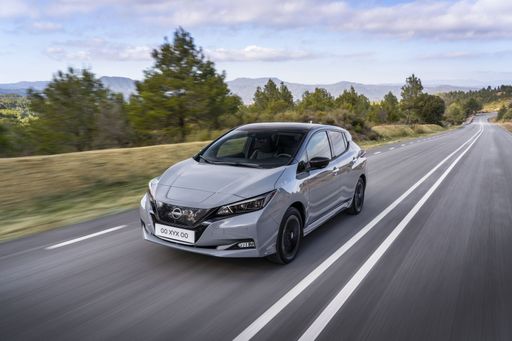 @ germany.nissannews.com
@ germany.nissannews.com
 @ germany.nissannews.com
@ germany.nissannews.com
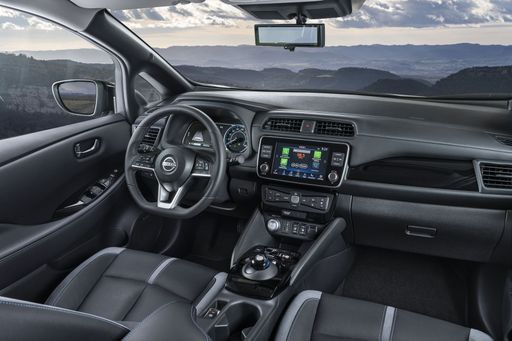 @ germany.nissannews.com
@ germany.nissannews.com
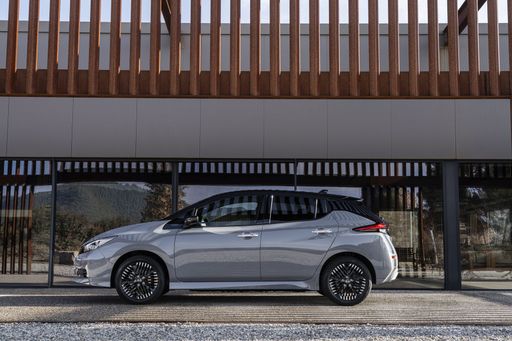 @ germany.nissannews.com
@ germany.nissannews.com
Volvo XC60
The Volvo XC60 strikes a perfect balance between contemporary design and practical functionality, making it an appealing choice for those in search of a reliable and stylish SUV. Its interior showcases a blend of high-quality materials and innovative technology, ensuring a comfortable and seamless driving experience. With its emphasis on safety and environmental sustainability, the XC60 continues to stand out in the competitive SUV market.
details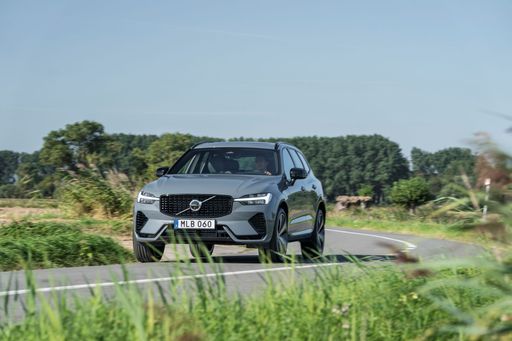 @ media.volvocars.com
@ media.volvocars.com
 @ media.volvocars.com
@ media.volvocars.com
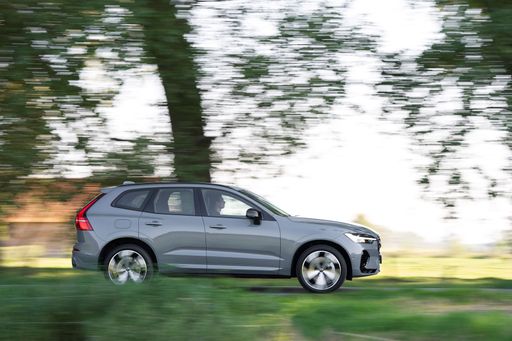 @ media.volvocars.com
@ media.volvocars.com
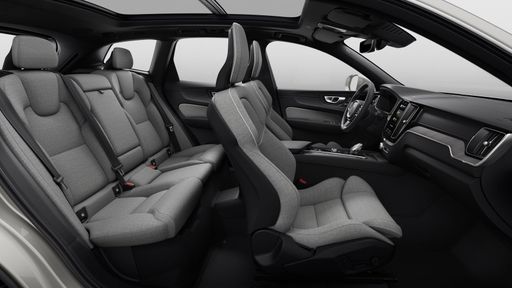 @ media.volvocars.com
@ media.volvocars.com
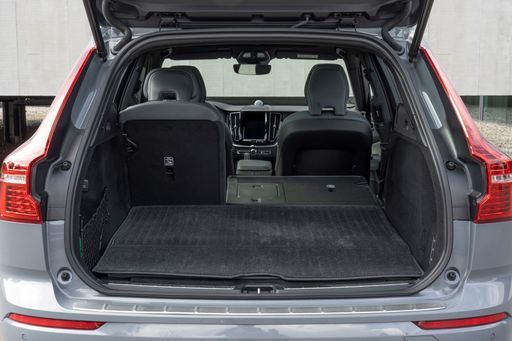 @ media.volvocars.com
@ media.volvocars.com

|

|
|
|
|
Costs and Consumption |
|
|---|---|
|
Price
30800 - 37200 £
|
Price
49200 - 75100 £
|
|
Consumption L/100km
-
|
Consumption L/100km
2.8 - 7.5 L
|
|
Consumption kWh/100km
16.7 - 17.8 kWh
|
Consumption kWh/100km
-
|
|
Electric Range
270 - 385 km
|
Electric Range
74 - 82 km
|
|
Battery Capacity
39 - 59 kWh
|
Battery Capacity
14.70 kWh
|
|
co2
0 g/km
|
co2
64 - 169 g/km
|
|
Fuel tank capacity
-
|
Fuel tank capacity
71 L
|
Dimensions and Body |
|
|---|---|
|
Body Type
Hatchback
|
Body Type
SUV
|
|
Seats
5
|
Seats
5
|
|
Doors
5
|
Doors
5
|
|
Curb weight
1580 - 1756 kg
|
Curb weight
1900 - 2150 kg
|
|
Trunk capacity
385 - 394 L
|
Trunk capacity
468 - 483 L
|
|
Length
4490 mm
|
Length
4708 mm
|
|
Width
1788 mm
|
Width
1902 mm
|
|
Height
1540 - 1545 mm
|
Height
1651 - 1655 mm
|
|
Payload
384 - 415 kg
|
Payload
510 - 550 kg
|
Engine and Performance |
|
|---|---|
|
Engine Type
Electric
|
Engine Type
Petrol MHEV, Plugin Hybrid
|
|
Transmission
Automatic
|
Transmission
Automatic
|
|
Transmission Detail
Reduction Gearbox
|
Transmission Detail
Automatic Gearbox
|
|
Drive Type
Front-Wheel Drive
|
Drive Type
All-Wheel Drive
|
|
Power HP
150 - 217 HP
|
Power HP
250 - 455 HP
|
|
Acceleration 0-100km/h
6.9 - 7.9 s
|
Acceleration 0-100km/h
4.9 - 6.9 s
|
|
Max Speed
144 - 157 km/h
|
Max Speed
180 km/h
|
|
Torque
320 - 340 Nm
|
Torque
350 - 709 Nm
|
|
Number of Cylinders
-
|
Number of Cylinders
4
|
|
Power kW
110 - 160 kW
|
Power kW
184 - 335 kW
|
|
Engine capacity
-
|
Engine capacity
1969 cm3
|
General |
|
|---|---|
|
Model Year
2019
|
Model Year
2025
|
|
CO2 Efficiency Class
A
|
CO2 Efficiency Class
F, B
|
|
Brand
Nissan
|
Brand
Volvo
|
Nissan Leaf
Introduction to the Nissan Leaf: A Pioneer in Electric Mobility
The Nissan Leaf has established itself as a trailblazer in the realm of electric vehicles (EVs) since its launch. As we delve into its present-day iterations, the Leaf continues to soar in popularity due to remarkable advancements in technology and sustainability. Let's explore what makes the Nissan Leaf a standout in today's automotive market.
Power and Performance: Under the Hood of the Nissan Leaf
The Nissan Leaf boasts a power output ranging from 150 to 217 PS, depending on the battery option chosen. The vehicle's electric motor, a product of cutting-edge engineering, offers instant torque ranging from 320 to 340 Nm, resulting in impressive acceleration capabilities. The 0 to 100 km/h dash is achieved in as little as 6.9 seconds, showcasing its prowess in electric performance.
Battery Technology: Efficient Energy Management
When discussing the Nissan Leaf, battery technology is at the forefront. The available battery capacities range from 39 to 59 kWh, supporting an electric range between 270 to 385 km. This flexibility allows drivers to choose a model that best fits their driving habits, providing peace of mind for longer journeys without frequent recharging.
Sustainability: The Environmental Edge
One of the primary attractions of the Nissan Leaf is its commitment to sustainability. As an all-electric vehicle, it produces zero CO2 emissions, placing it in the top tier of the CO2-efficiency class with an 'A' rating. This clean energy approach contributes significantly to reducing environmental impact and supports Nissan's drive towards a greener future.
Design and Comfort: Aesthetic Appeal and Practicality
The Nissan Leaf is not just about efficiency; it's also designed for comfort and utility. With its sleek hatchback body and dimensions of 4490 mm in length, 1788 mm in width, and a height of up to 1545 mm, it offers ample interior space. The boot capacity ranges from 385 to 394 litres, providing sufficient storage for everyday needs. The model accommodates five passengers comfortably, ensuring a pleasant ride for everyone.
Innovations and Safety: Advanced Features for Peace of Mind
Nissan equips the Leaf with an array of intelligent features that enhance safety and convenience. The available equipment lines, including N-CONNECTA, Tekna, e+ N-CONNECTA, and e+ Tekna, offer varying levels of technology integration. ProPILOT Assist, e-Pedal, and a comprehensive suite of driver-assistance technology are just a few examples that highlight Nissan's commitment to innovation in the EV market.
Conclusion: The Nissan Leaf Continues to Lead
With prices ranging from €35,900 to €43,400, the Nissan Leaf remains an attractive choice for those looking to embrace electric mobility. It perfectly balances performance, design, and sustainability, making it a compelling choice in the competitive EV landscape. The Nissan Leaf not only represents the future of driving but also reinforces why it continues to be a leader in the electric vehicle community.
Volvo XC60
Introduction to the Volvo XC60
The Volvo XC60 continues to set the standard in the luxury SUV category, embodying a blend of Scandinavian design, cutting-edge technology, and robust performance. As one of Volvo's best-selling models, the XC60 delivers an exceptional driving experience characterized by its impressive powertrains and a suite of innovative features. This article delves into the technical intricacies and innovative advancements that define the Volvo XC60, highlighting why it remains a top choice for discerning drivers.
Performance and Powertrains
The Volvo XC60 offers a range of powertrains to suit diverse preferences, from the efficient mild-hybrid systems to the powerful plug-in hybrids. The mild-hybrid variants provide a balance of performance and fuel economy, generating up to 250 PS and achieving fuel consumption as low as 7.7 L/100km. Meanwhile, the plug-in hybrid models take efficiency to another level, offering up to 455 PS with remarkably low fuel consumption of just 0.9 L/100km and an electric range of up to 80 km.
Electric Innovation
Volvo’s commitment to sustainability is evident in the XC60's plug-in hybrid models, which offer a battery capacity of 14.7 kWh. This allows for significant electric-only driving, reducing emissions and providing a quieter ride. With a focus on reducing its carbon footprint, Volvo offers some versions with CO2 emissions as low as 22 g/km. The renowned Polestar Engineered package further enhances the driving dynamics, featuring sport-tuned suspension and increased power output.
Advanced Safety Features
Known for prioritising safety, Volvo integrates several advanced safety technologies into the XC60. Standard features include the City Safety suite, which incorporates collision avoidance and mitigation, along with pedestrian detection. The SUV is also equipped with Volvo's Pilot Assist system, an advanced driver assistance feature that aids steering, braking, and acceleration up to 130 km/h, ensuring a more relaxed drive on highways.
Interior Comfort and Technology
The XC60 doesn’t compromise on luxury, offering a spacious interior with high-quality materials and state-of-the-art technology. The standard Sensus infotainment system provides intuitive control over multimedia, navigation, and connected services. Features such as a panoramic sunroof and premium audio systems enhance comfort and driving pleasure, while the adaptive seats and climate control ensure a comfortable environment for all passengers.
Conclusion
The Volvo XC60 exemplifies a harmonious blend of style, technology, and sustainability. With its array of powertrains and cutting-edge features, it meets the needs of a broad range of drivers, maintaining Volvo’s reputation for safety and quality. Whether one opts for the fuel-efficient mild-hybrid or the powerful plug-in hybrid, the XC60 remains a formidable contender in the luxury SUV market, offering a driving experience that is both indulgent and responsible.
What drivetrain options does the Nissan Leaf have?
The Nissan Leaf is available as Front-Wheel Drive.
The prices and data displayed are estimates based on German list prices and may vary by country. This information is not legally binding.
